Introduction
Stir-fried enoki mushrooms, a beloved dish in Asian cuisine, offer a delicate balance of textures and flavors that captivate the palate. With their slender, crisp stems and mild, earthy taste, enoki mushrooms transform into a culinary masterpiece when prepared correctly. This article delves into the intricacies of crafting the perfect stir-fried enoki mushrooms, from selecting the freshest ingredients to mastering the stovetop technique. Whether you’re a novice cook or a seasoned home chef, this guide will equip you with the knowledge to create a dish that is both visually stunning and irresistibly delicious.
The Allure of Enoki Mushrooms
Enoki mushrooms (Flammulina filiformis) are native to East Asia and have gained global popularity for their unique appearance and versatility. Their slender, white stems and tiny caps resemble delicate strands of thread, making them a striking addition to any plate. Beyond their aesthetic appeal, enoki mushrooms are prized for their subtle, slightly sweet flavor and satisfying crunch. Nutritionally, they are low in calories and rich in fiber, antioxidants, and essential vitamins like B-complex and vitamin D. Their ability to absorb flavors from sauces and seasonings makes them an ideal candidate for stir-frying, a cooking method that amplifies their natural qualities while imparting smoky, caramelized notes.

Ingredients: The Foundation of Flavor
Creating a memorable stir-fried enoki mushroom dish begins with assembling the right ingredients. While the recipe is inherently simple, the quality of each component elevates the final result. Here’s a breakdown of the essentials:
- Enoki Mushrooms (400g): Opt for fresh, firm mushrooms with intact caps. Avoid those that appear slimy or discolored.
- Aromatics:
- Garlic (4 cloves, minced): Adds pungent depth.
- Ginger (1-inch piece, grated): Imparts a warm, citrusy zing.
- Scallions (3 stalks, sliced): Use both white and green parts for layered flavor.
- Sauce Base:
- Soy sauce (2 tbsp): Use low-sodium for a lighter option.
- Oyster sauce (1 tbsp): Enhances umami richness.
- Sesame oil (1 tsp): For nutty aroma.
- Rice vinegar (1 tsp): Balances sweetness with acidity.
- Sugar (1/2 tsp): Caramelizes during cooking.
- Protein (Optional):
- Tofu (100g, cubed): For a vegetarian twist.
- Shrimp (150g, peeled): Adds briny sweetness.
- Vegetables:
- Bell peppers (1/2 cup, julienned): Adds color and crunch.
- Carrots (1/4 cup, shredded): For natural sweetness.
- Cooking Oil:
Peanut oil (2 tbsp): High smoke point ideal for stir-frying.
- Garnishes:
- Toasted sesame seeds (1 tsp).
- Fresh cilantro (1/4 cup, chopped).
Equipment: Tools of the Trade
Stir-frying demands precision and speed, making the right equipment essential. A carbon-steel wok is traditional and optimal for even heat distribution, but a large stainless-steel skillet or cast-iron pan works as an alternative. Ensure your pan is well-seasoned to prevent sticking. Additional tools include:
- A sharp chef’s knife for precise chopping.
- A garlic press or microplane for finely grating ginger.
- Tongs or a long-handled spatula for tossing ingredients.
- A small mixing bowl for preparing the sauce.
Step-by-Step Preparation
Prepping the Enoki Mushrooms
- Trimming: Use kitchen shears to snip off the woody base of the mushroom cluster. Discard this portion, as it is tough and inedible.
- Separation: Gently separate the mushrooms into individual strands. Rinse them under cold water to remove any debris, then pat dry with a clean kitchen towel. Excess moisture will cause the mushrooms to steam instead of sear, so thorough drying is critical.
Mise en Place
Stir-frying is a fast-paced technique, so organize your ingredients beforehand:
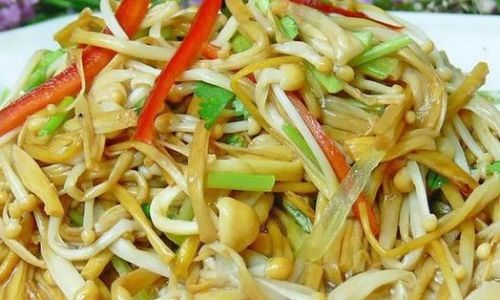
- Mince garlic and grate ginger.
- Slice scallions, separating white and green parts.
- Julienne bell peppers and shred carrots.
- Whisk the sauce ingredients in a bowl until the sugar dissolves.
Heating the Wok
- Place your wok or skillet over high heat. Allow it to preheat for 2-3 minutes until a drop of water evaporates instantly upon contact.
- Add peanut oil and swirl to coat the pan. The oil should shimmer but not smoke.
Sautéing Aromatics
- Add the white parts of the scallions, garlic, and ginger to the hot oil. Stir-fry for 30 seconds until fragrant but not browned. Overcooking aromatics will introduce bitterness.
Introducing Protein (Optional)
- If using shrimp, add them to the wok and stir-fry for 1-2 minutes until pink and opaque. Remove and set aside to prevent overcooking.
- For tofu, pan-fry cubes in a separate pan until golden before incorporating.
Cooking the Enoki Mushrooms
- Add the prepared enoki mushrooms to the wok. Spread them evenly to ensure direct contact with the hot surface.
- Resist the urge to stir immediately; allow the mushrooms to sear for 1-2 minutes. This develops a golden-brown crust and intensifies their flavor.
- Toss gently using tongs, ensuring even cooking. The mushrooms will begin to soften and release moisture.
Adding Vegetables and Sauce
- Toss in bell peppers and carrots. Stir-fry for an additional minute to retain their crispness.
- Pour the prepared sauce over the ingredients. Toss vigorously to coat evenly. The sauce will thicken slightly as it reduces.
Finishing Touches
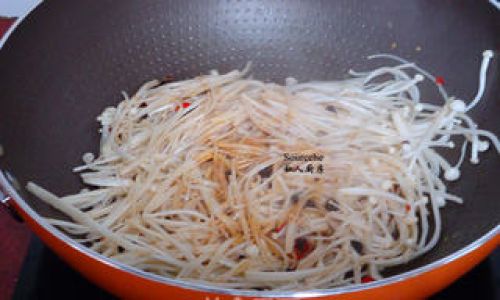
- Return cooked protein (if used) to the wok and toss to combine.
- Drizzle sesame oil and sprinkle sesame seeds.
- Garnish with scallion greens and cilantro.
Serving Suggestions
Stir-fried enoki mushrooms shine as a standalone dish or alongside steamed rice, noodles, or quinoa. For a complete meal, pair them with:
- Ginger-Scallion Noodles: Toss cooked noodles with a simple sauce of soy sauce, sesame oil, and sliced scallions.
- Braised Tofu: Cubes of silken tofu simmered in a savory broth.
- Garlic Spinach: Wilted spinach sautéed with garlic and red pepper flakes.
Mastering Advanced Techniques
Achieving Perfect Caramelization
The key to exceptional stir-fried enoki mushrooms lies in achieving Maillard browning—a chemical reaction between amino acids and sugars that creates complex flavors. To maximize this:
- Ensure the pan is scorching hot before adding oil.
- Avoid overcrowding the pan, as this lowers the temperature and causes steaming.
- Cook mushrooms in batches if necessary.
Balancing Flavors
Stir-fry sauces should strike a harmony between salty, sweet, sour, and umami. Adjust ratios to suit your palate:
- Saltier: Add an extra teaspoon of soy sauce.
- Sweeter: Increase sugar or incorporate a splash of mirin.
- Tangier: Boost rice vinegar or add a squeeze of lime.
Textural Contrast
Enhance the dish’s appeal by incorporating crunchy elements:
- Toasted cashews or peanuts.
- Water chestnuts or bamboo shoots.
- Crispy fried shallots.
Dietary Adaptations
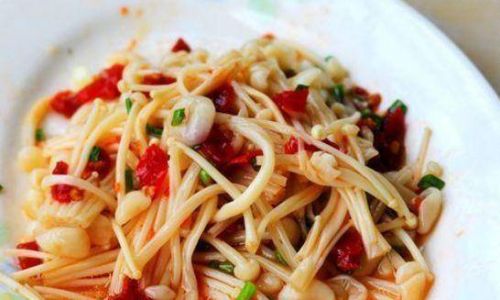
- Vegan/Vegetarian: Substitute oyster sauce with mushroom-based stir-fry sauce.
- Gluten-Free: Use tamari or coconut aminos instead of soy sauce.
- Low-Sodium: Reduce soy sauce and enhance flavor with fresh herbs or citrus.
Troubleshooting Common Pitfalls
Soggy Mushrooms
- Cause: Excess moisture from inadequate drying or overcrowding the pan.
- Fix: Pat mushrooms dry thoroughly and cook in batches.
Burnt Aromatics
- Cause: High heat or prolonged cooking.
- Fix: Sauté aromatics over medium heat and remove promptly once fragrant.
Bland Flavor
- Cause: Under-seasoning or insufficient sauce.
- Fix: Taste and adjust seasoning before serving. Add a pinch of white pepper or chili flakes for heat.
Overcooked Vegetables
- Cause: Adding vegetables too early.
- Fix: Stir-fry delicate vegetables like bell peppers last to preserve their crunch.
The Science Behind Stir-Frying
Stir-frying is more than a cooking method—it’s a culinary science. The technique relies on high heat to rapidly cook ingredients, preserving their nutrients, color, and texture. Enoki mushrooms, with their high water content, benefit from this method as it evaporates moisture quickly, concentrating their flavor. The wok’s concave shape promotes efficient heat circulation, ensuring even cooking. Additionally, the Maillard reaction occurs when proteins and sugars are exposed to heat, creating the dish’s signature savory notes.
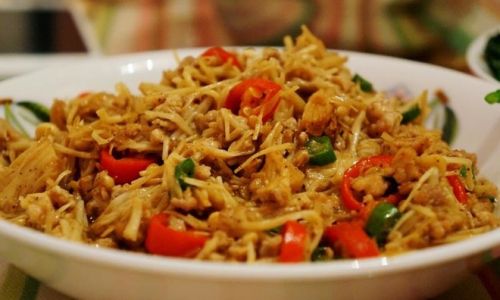
Cultural Significance
In many Asian cultures, stir-fried enoki mushrooms hold symbolic value. The mushrooms’ slender form represents longevity and prosperity, making them a staple at celebratory feasts. Their neutral flavor profile also allows them to adapt to regional preferences—paired with chili in Sichuan cuisine, fermented black beans in Cantonese dishes, or coconut milk in Southeast Asian preparations.
Conclusion
Stir-fried enoki mushrooms are a testament to the beauty of simplicity in cooking. By mastering the interplay of heat, seasoning, and technique, you can elevate this humble ingredient into a dish that delights the senses. Whether you prefer it spicy, savory, or subtly sweet, this recipe offers a canvas for culinary creativity. Experiment with ingredients, adjust flavors to your liking, and savor the joy of creating a meal that is both nourishing and deeply satisfying. With practice, you’ll find that perfection lies not in rigid adherence to a recipe, but in the confidence to adapt and innovate. Happy cooking!
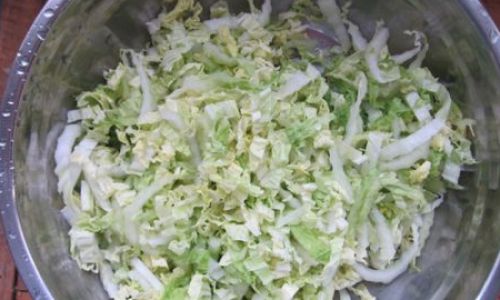



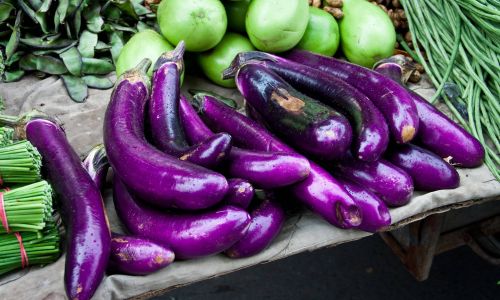

0 comments